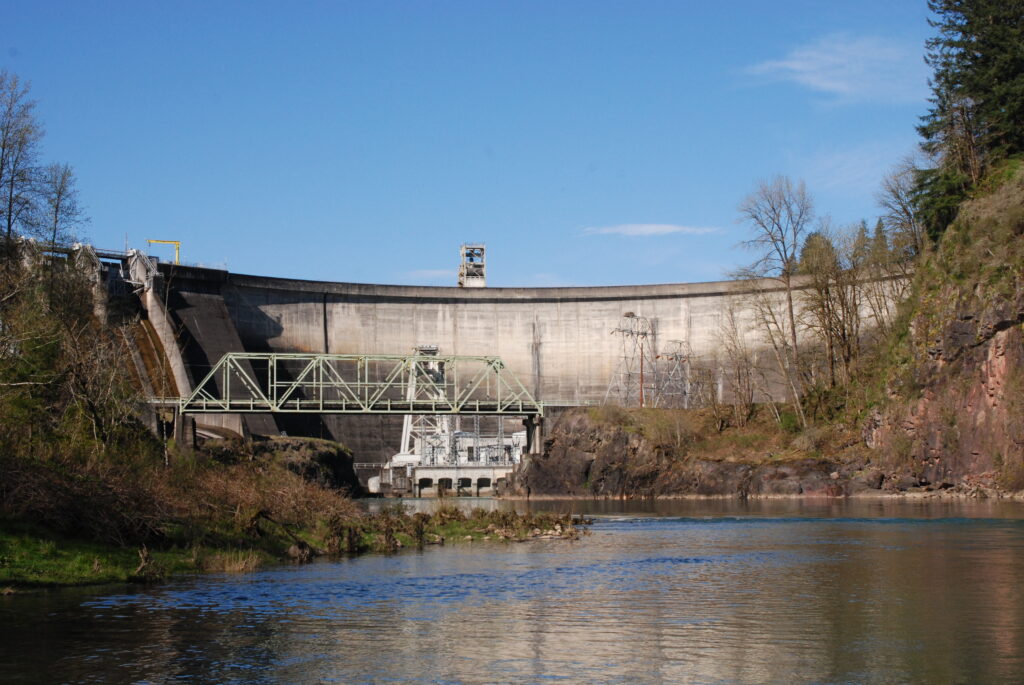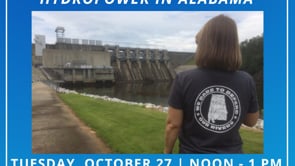Bringing Back Lewis River Salmon

American Rivers recently praised PacifiCorp and parent company Berkshire Hathaway for stepping up to ensure dam removal and river restoration on the Klamath River in Oregon and California. While we applaud PacifiCorp for taking responsibility for the damage that their dams have caused on the Klamath, they still have work to do on Washington’s Lewis River. American Rivers, the Cowlitz Indian Tribe, the Yakama Nation and other partners are working hard to hold them accountable.
The Lewis River flows through southwest Washington beginning at Adams Glacier on Mt. Adams and drains a basin of roughly 1,400 square miles. The river winds its way through Gifford Pinchot National Forest before joining the Columbia River near La Center, WA.
Rivers need your voice
The Cowlitz, Yakama, Klickitat, and Chinook people have all called the basin home since time immemorial and the river was home to abundant salmon, central to their life and culture. Today, four large hydropower facilities block the river, preventing salmon and bull trout from returning to their home waters. Constructed between 1931 and 1958, the Lewis River hydroelectric project consists of Merwin Dam, Yale Dam, and Swift No. 1 and Swift No. 2 which are joined by a canal. Cowlitz County Public Utility District owns the Swift No. 2 facility, while PacifiCorp owns Merwin, Yale, and Swift No. 1 and operates all four facilities to produce a total of 580 megawatts of hydroelectricity – enough power to supply approximately 460,000 homes per year. While some salmon not used for broodstocking at the Lewis River or Merwin hatcheries are trapped at the lowermost dam and transported above the uppermost dam by truck, these facilities deny access to traditional spawning habitat for a majority of adult Lower Columbia River salmon and prevent juvenile salmon from outmigrating to the ocean.
In 2004, the utilities signed a settlement agreement with American Rivers and other non-governmental organizations, eleven federal and state governmental agencies, the Cowlitz Indian Tribe and the Confederated Bands and Tribes of the Yakama Nation. This agreement accompanied the most recent license required to operate the dams, which was granted by the Federal Energy Regulatory Commission (FERC) in 2008. The agreement stipulated that the utilities must provide fish passage facilities which would allow anadromous fish to move through each of the three project reservoirs by their own volition – opening up over 170 miles of spawning habitat. The requirement of full fish passage throughout the entire Lewis River was celebrated by salmon advocates throughout the region.

In 2016, the utilities presented information to the National Marine Fisheries Service (NMFS) and United States Fish and Wildlife Service (USFWS) in an attempt to evade their obligation to build fish passage facilities by claiming that habitat restoration actions can provide equivalent benefits to fish passage at a lower cost. Despite the significant scientific and technical information disputing this conclusion, NMFS and USFWS issued a determination that deemed fish passage “inappropriate” four years later. The federal agencies stated that PacifiCorp would likely not need to build two of the proposed facilities and could defer a decision to build the other two facilities until 2031 and 2035.
Emboldened by the decision made by NMFS and USFWS, the utilities have submitted amended applications to FERC that would allow them to renege on their agreement of building fish passage facilities throughout each of the three reservoirs. As stipulated in the 2004 Settlement Agreement, if fish passage is deemed inappropriate, the utilities will instead implement a habitat restoration plan. The utilities have proposed and filed applications for the “In Lieu plan,” a program which would seek to improve 41 miles of aquatic habitat in the headwaters of the Lewis River at the cost of $21 million — a savings of over $160 million from the original fish passage plan. Despite insufficient evidence provided by the utility companies or by NMFS to suggest that fish passage is inappropriate, the utilities are forging ahead with a cheaper plan that will fail to recover federally threatened Lower Columbia River salmon and bull trout populations.
NMFS requires that members of the Aquatic Coordination Committee (ACC), a committee formed under the 2004 Settlement Agreement to help coordinate and consult on aquatic measures related to the projects, to reach a consensus agreement before NMFS will consult on the proposed habitat restoration plans. Members of the ACC, which includes American Rivers staff, are now being asked to sign off on the utilities’ attempt at skirting their obligation to provide fish passage through the reservoirs. In addition to American Rivers, other parties to the ACC that have voted not to approve the In Lieu plan include the Lower Columbia Fish Recovery Board, Washington Department of Fish and Wildlife, the Confederated Tribes and Bands of the Yakama Nation, the Cowlitz Tribe, and Trout Unlimited.
There has been insufficient evidence provided by the utility companies or by NMFS to suggest that fish passage is inappropriate, and to move forward with the In Lieu habitat restoration plan without the consensus of the Settlement Agreement parties is premature. The In Lieu plan put forth by the utilities does not present a comparison of habitat restoration impacts to impacts of full fish passage through the reservoirs. Generally, the In Lieu plan errs on the side of over-estimating the benefits of habitat restoration while under-estimating the benefits of full fish passage through the dams.
There remains too much uncertainty when it comes to how and when salmon and bull trout populations will respond to habitat restoration. American Rivers does not support the In Lieu plan put forth by the utilities and does not agree that the In Lieu plan will aid in Lower Columbia River salmon recovery.
Sixteen years ago, PacifiCorp and Cowlitz County PUD made a promise to address the damage that their dams inflict on the Lewis River by installing fish passage. Now, they are trying to get out of this obligation. They have a responsibility to restore the Lewis River’s salmon runs and that means ensuring fish passage at the dams. For the river, the salmon, and all who benefit from a healthy Lewis River, we won’t settle for less.
The post Bringing Back Lewis River Salmon appeared first on American Rivers.



